The nuances of growing a raspberry tree

Both adults and children like to enjoy fresh and tasty raspberries. Such a culture is often found in areas in the form of a common shrub. However, it will be more interesting to try to grow a raspberry tree, which will not only give ripe fruits, but also serve as a decoration for the garden. How to properly grow such a variety, we will consider in the article.
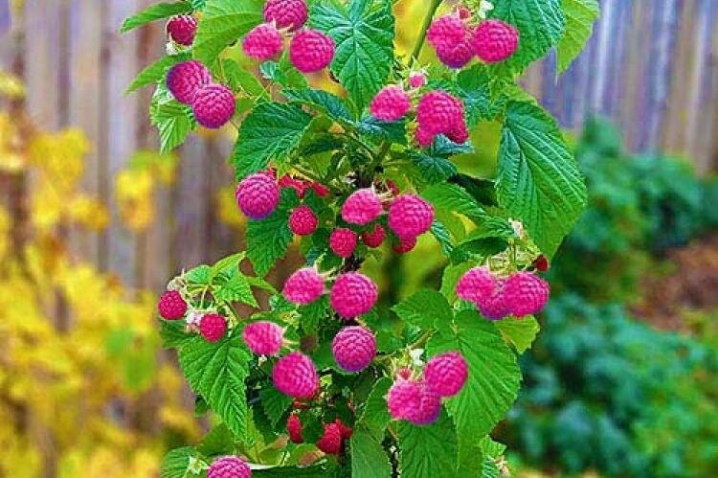
What it is?
When it comes to a raspberry tree, this concept means a tree-like standard raspberry. It has a straight, powerful stem and can grow up to 2 meters in height. The bush is highly resistant to adverse conditions, does not have thorns, which is very convenient.
Such varieties are remontant, which means that it will be possible to harvest the crop almost until frost.
Due to its structural features, tree raspberries always receive a sufficient amount of oxygen and nutrition from the soil. The disadvantage of this variety is that it is not grown in the northern regions due to its low resistance to cold. In addition, a tree culture will not give the gardener the opportunity to propagate it by root shoots, since it almost does not produce it.
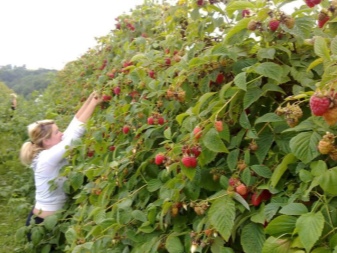
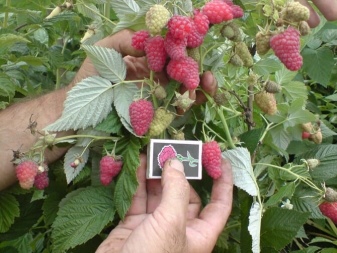
Landing
Having decided to plant such a plant in open ground, the gardener will have to follow several important rules.
Timing
Most summer residents plant a raspberry tree in the spring. This is not surprising as it is expected to be warm in the coming months and the plant will be able to adapt well. Planting in spring is widely practiced in the Moscow region, regions with cool winters. It is very important that the air temperature at the time of disembarkation is at least 15 degrees Celsius. You also need to make sure that night frosts will no longer return. In most regions, spring planting is carried out closer to mid-April, but the choice must be based on the climate of the region.
You can plant tree raspberries in the fall. This is most often done in areas with mild winters. At the same time, the earthen lump must remain intact. All autumn plantings are carried out before the onset of cold weather. This is mainly the end of September or the beginning of October.
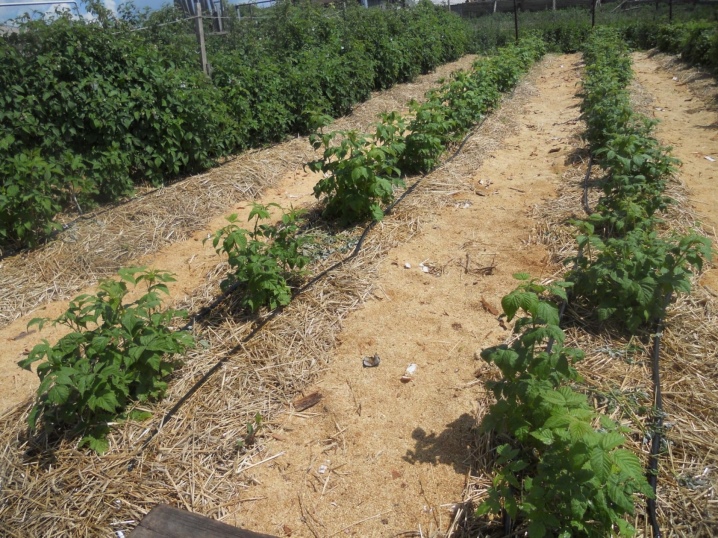
A place
Standard raspberries are very fond of sunlight, so there should be a lot of it. Strong winds should not be allowed. Seedlings should not be placed next to fruit trees of great height, as well as in close proximity to strawberries, strawberries, nightshade crops, cabbage. The soil for raspberries requires breathable, lightweight. Acidic soils will inhibit growth, so you should choose neutral soil.
In about 30-40 days, the preparation of the landing site begins. Weeds and old remnants of roots and leaves are removed, digging is carried out. Based on 1 sq. m of the plot are brought in 1.5 buckets of humus and 500 grams of ash. You can add a little peat to loosen the soil.
It is recommended to prepare planting holes in advance.

Scheme and technology
For planting, healthy seedlings are taken at the age of one year. They should have not yet opened kidneys. Bushes need to be planted at a distance of one and a half meters from each other. The diameter of the hole will be half a meter, and the depth will be about 40 cm. Peat and humus, taken in equal parts, will need to be added to each planting hole. In addition, experienced gardeners fertilize the ready-made composition with a teaspoon of superphosphate. After applying dressings, the holes are watered with a small amount of water.
When the liquid is slightly absorbed, they begin to plant the seedlings themselves. The instance is lowered into the center of the hole, the roots are straightened if they are tangled. It is worth acting carefully. The pit is covered with earth, rammed a little so that the air voids leave. Spread a layer of mulch and then water the plants. A five-liter bucket will be enough for everyone. The maximum deepening of the growth point is 3 centimeters. The last step is pruning the shoots. They are shortened so that the length is about 30 cm.

How to care?
Planting raspberries correctly is only half the battle, because you still need to ensure that it takes root and begins to bear fruit. Therefore, gardeners need to pay attention to the following agricultural rules.
Watering
Garden raspberries need the right amount of moisture. If there is not enough water, then the berries will become small and sour, and if there is a lot, the roots will rot. It is worth watering the bush when the topsoil has dried out by about 5 centimeters. Watering is carried out at the root, controlling the amount of moisture. It should be 8-10 liters per tree. Water is provided to the plant 1 or 2 times every 7 days, depending on weather conditions.
If the region is hot and dry weather, watering is increased. On the contrary, with prolonged rain, they are stopped. It is important to note that young trees of standard raspberries will need daily watering, until fresh shoots appear. The water must be taken warm, it is good if it stands in the sun for a day.
Another tip about watering will help those who do not like dirt on the site. To prevent the earth from turning into mush, water can be poured along a trench dug out in advance near the bush. So it will be quickly absorbed, and it will be possible to walk on the ground.

Top dressing
Caring for a raspberry tree necessarily includes feeding. At the dacha, the plants will need to be fed in the following periods.
- In the spring, as soon as the buds begin to bloom, fertilizers with nitrogen are recommended. Thanks to them, the green mass will grow quickly. A good result is obtained by nitroammophoska. For 1 sq. m usually take 50 grams of such a tool. It is even easier to dilute manure: 1 liter is enough for a 10 liter bucket. After applying any fertilizers, the soil is watered with clean water.
- Flowering will require feeding with superphosphate. Ten grams of such a product is stirred in 10 liters of water.
- When the berries appear, you can fertilize the standard raspberries with ash. For this, a glass of substance is poured with a bucket of water. Each raspberry bush will need 3 liters of this fertilizer.
- A little less than a month before the onset of cold weather, the trees are fed with organic matter in solid form. In winter, she will warm the plants.
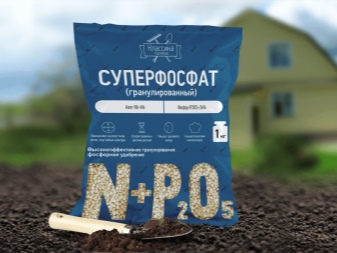
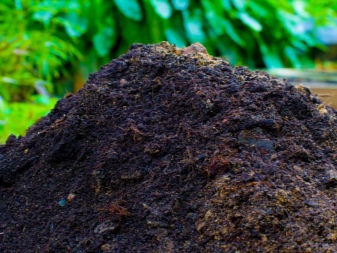
Weeding, mulching
Weeding is a must-have for a gardener who wants to grow a beautiful and healthy bush. The land around the raspberry trees will have to get rid of weeds, which take from it useful substances intended for cultivated plants. However, it is no secret that the number of weeding can be greatly reduced, if, at all, you do not get rid of the annoying procedure.
Mulching will help with this. Mulch not only stores moisture in the ground and protects the plant from most diseases, but also prevents weeds from germinating. Most often, organic matter is used on open ground, mainly peat or humus. Many gardeners also recommend sawdust and dried straw.
The main thing is to remember that organic mulch needs timely replacement, otherwise it will itself become a breeding ground for bacteria. It must be changed a couple of times per season. In addition, it is important that the layer of such material is 5-10 centimeters.
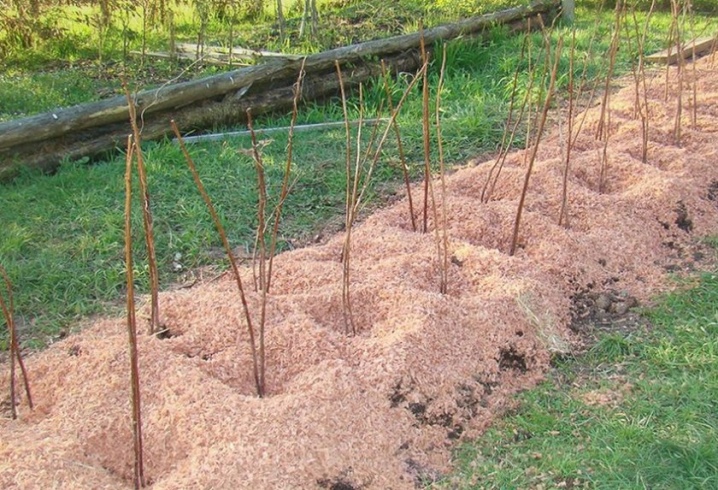
Pruning
In order for a raspberry tree to look really beautiful and attract the eyes of others, it must be properly shaped. The first formation is carried out already in the year when the raspberries were planted. As a rule, the plant reaches a height of more than 60 cm.In the first year, only the tops should be trimmed, making them about 15 centimeters shorter.
The next pruning is done in the spring. The grown branches are found, cut off by 15 centimeters. So the shoots will grow faster. In addition, the plant will often have to do preventive pruning. They can be carried out in the fall and spring. The goal is to identify diseased, dead and already non-viable shoots and remove them. Sanitary pruning is done as needed.
The most important pruning is done for the winter. You will need to remove all the shoots that have already yielded a crop this season. This will allow the plant to grow quickly in the spring, giving life to new branches.

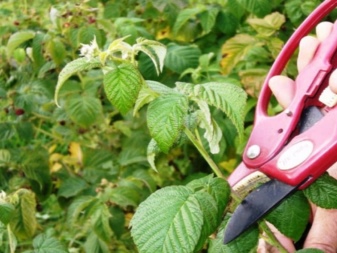
Shelter
Whichever variety of raspberries is chosen, any of them will need to be prepared for winter. The plant is afraid of cold weather, and it will need to be covered. The hiding procedure begins after the last pruning has been carried out. The leaves of the bushes break off, and the trunk circles are mulched with high quality. You can take sawdust, peat, straw or any other material that is on the site. Further, the shoots are carefully bent to the soil, trying not to break. They are fixed and covered with covering material on top.
Raspberry tree-like winters perfectly under spruce branches, burlap, agrofibre, or simply being dug in a large snowdrift.
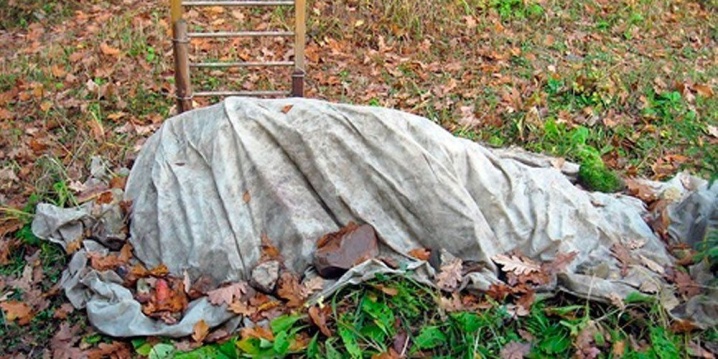
Transfer
It is imperative to transplant raspberries, because they greatly deplete the soil. The procedure is recommended to be carried out every 5 years, but with stable fruiting, the timing can be shifted. The transplant rejuvenates the bush, gives it a second life. In addition, it also ennobles the site, creating order on it.
The timing of the transplant does not differ from the timing of planting raspberries. It is spring or autumn, depending on the climate and region. The requirements for the site and soil will also be the same as for planting. The main thing is not to transplant the bush where potatoes, strawberries, and even more raspberries, even ordinary ones, have already grown. The soil can be prepared several months in advance or almost before planting. There is a little trick here: in the spring, when planting, more nitrogen is added, and in the fall - potassium and phosphorus.
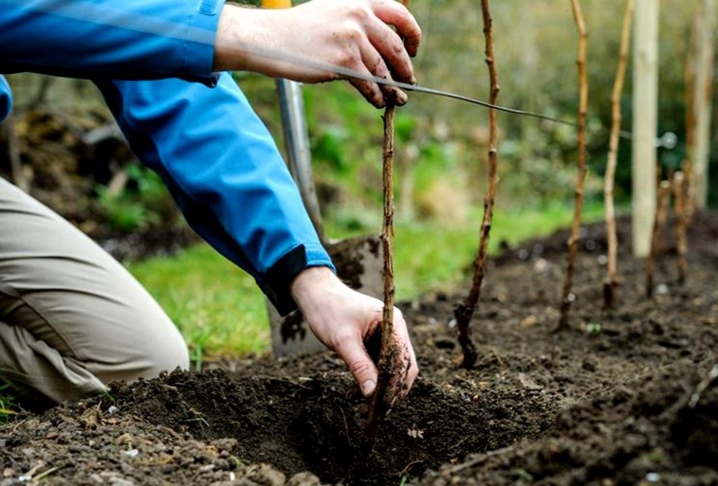
They dig planting holes, apply fertilizers. If the root system is open, it is forbidden to add fresh organic matter, as it can burn the roots. Branches, shavings, sawdust would be a good option. All of this will start to sicken, creating natural conditions and helping to quickly recover from shock. Before planting, the raspberry bush is cut so that it is no more than 60 centimeters high.
Further work is carried out as follows:
- they dig in the bush, trying not to damage the root (the shovel is upright);
- raspberries are pulled out without disturbing the clod of earth;
- the bush is divided, getting several copies from one;
- the tree is planted in a hole, covered with soil, tamped;
- poured with water in a volume of 5 liters;
- after a few hours, more soil is poured and watered with the same amount of water;
- Lay a layer of mulch.
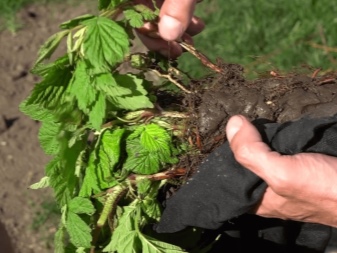
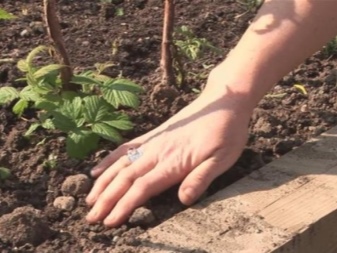
At this, the transplantation of the old bush to a new place can be considered complete.
Reproduction
Standard raspberries are easy to propagate on their own. This will allow gardeners to always have planting material at hand and save them from unnecessary cash spending. In the overwhelming majority of cases, cuttings are used. Common raspberries are propagated by root shoots, which the plant produces in large quantities. But the standard raspberry hardly produces it.
In the spring, gardeners most often use green cuttings. It is worth cutting shoots that have already grown to 20 cm. The lower part of the cuttings is removed from the foliage. Prepare the substrate by mixing sand and peat in equal parts. Green cuttings are planted there, watered. It is necessary to take care of the seedlings until summer, and already in the warm months they can be planted in separate places in the ground.
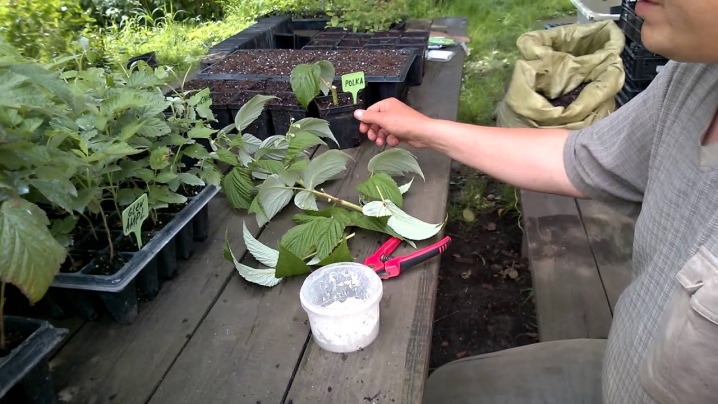
You can also dilute tree raspberries with root cuttings, so it reproduces quite well. The most powerful and vigorous bushes are selected, carefully dig in. Sprouts with buds are found, detached from the main root. Then they are planted in the same substrate as the green cuttings.All the necessary care is observed, and after germination, they are transferred to open ground.
As for the root growth, then, as already mentioned, it practically does not exist. But if you need 1-2 new bushes, then there will be enough overgrowth for them.
Specimens with a 20-centimeter height are selected, separated, treated with a weak solution of potassium permanganate. Disembarkation at another permanent place is carried out immediately.
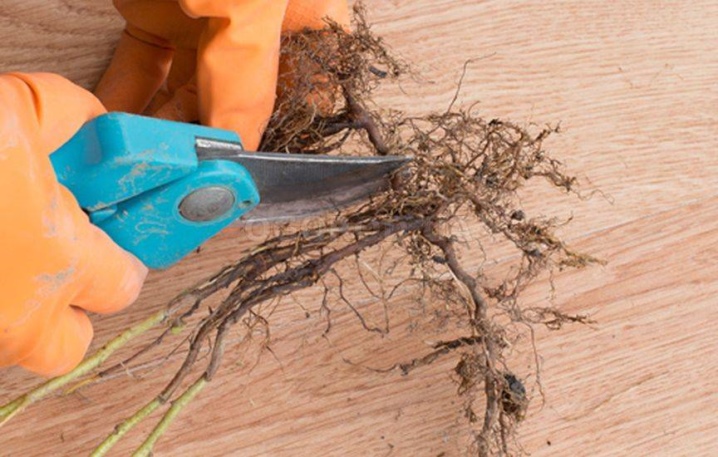
Diseases and pests
Standard tree raspberry is highly resistant to disease. Such a plant almost never causes problems for summer residents. But cases of infection with the fungus do occur. This happens when the permissible humidity is exceeded. The treatment will take a long time, so it is better to immediately cut out the diseased areas of the bush, carry away and destroy. Any remaining healthy parts must be treated with fungicides. The drug is selected depending on the disease. Often used "Topaz", "Fundazol".
The pests will be the same as on regular raspberries. This is a raspberry beetle, moth, weevils. Prevention of their appearance will allow prevention. To do this, before the start of sap flow, you will need to spray with a 1% Bordeaux mixture. If this has not been done, insecticides will have to remove the parasites. Folk methods are also helpful: wood ash, soap solution, tansy infusion, garlic-based infusions.
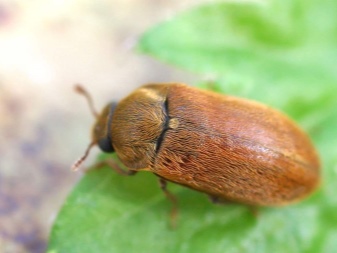
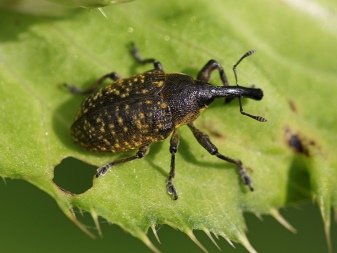
Useful Tips
Novice gardeners should take into account a few more useful recommendations regarding the cultivation of standard raspberry varieties.
- One of the most common weeds that constantly appears in raspberries and interferes with planting is creeping wheatgrass. To prevent its appearance, it is worth using the Roundup pesticide before planting the bushes.
- Any watering of the raspberry tree should be carried out when there is no sun. This applies especially to the sprinkling technique.
- Some varieties will require support and tying. This is necessary so that the tree does not break under its own weight.
- Raspberries are usually planted in sunny areas. This allows the fruit to gain a lot of sugar. However, if you like fruits with sourness, you should consider the possibility of shading.
- The timing of harvesting depends on the region, but in most cases the first berries appear in July. You need to harvest the fruits every 2 days, not allowing them to overripe. After all, such berries will become soft, they will begin to flow. No fruit is harvested in the rain. It is necessary to remove the berries from the tree without separating the stalks. This will keep the harvest longer.
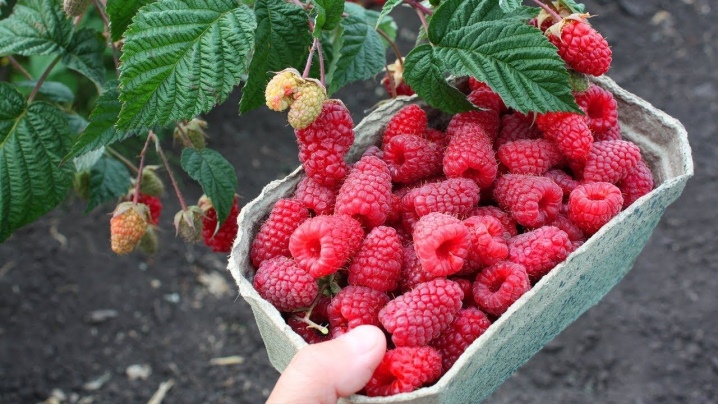
List of varieties of standard raspberries
- Repairability: semi-refurbished
- Berry color: burgundy red, shiny
- Taste: sweet with subtle sourness
- Ripening period: mid-late
- Berry weight, g: 6-10 g, in rare cases 15 g or more
- Yield: 6-12 kg per bush
- Repairability: Yes
- Berry color: dark crimson
- Taste: sweet and sour
- Ripening period: mid-late
- Berry weight, g: 3.7 - 4.5 g and up to 6.3
- Yield: 2.2 - 2.6 kg per bush, 15 t / ha
- Berry color: dark purple
- Taste: sweet
- Ripening period: average
- Berry weight, g: up to 9
- Yield: from 7 to 12 kg per bush
- Frost resistance: high
- Berry color: bright red
- Taste: sweet
- Ripening period: average
- Berry weight, g: 7-12
- Yield: 4 kg per bush
- Frost resistance: high, -30 ° C
- Repairability: Yes
- Berry color: red
- Taste: sweet without sugary
- Ripening period: mid-late
- Berry weight, g: 15-20
- Yield: up to 7 kg per tree, up to 20 t / ha

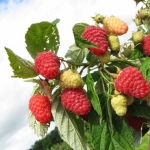















The comment was sent successfully.